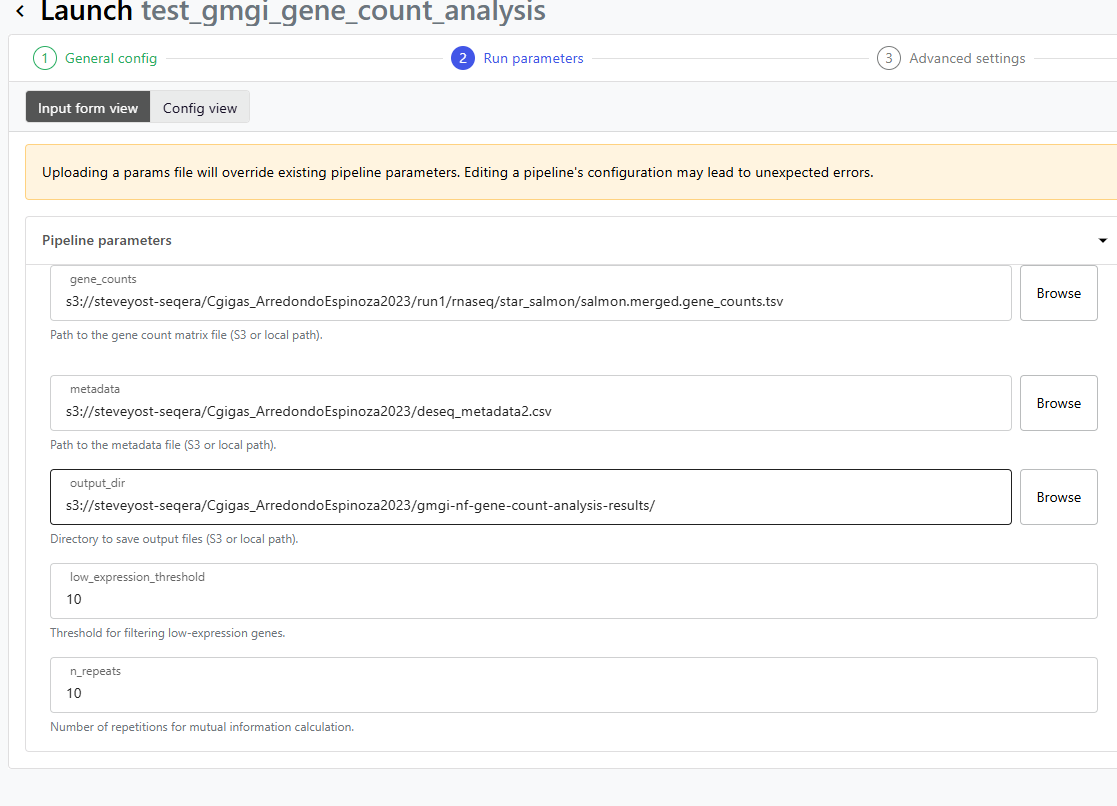Motivation
Given the interesting results found during the previously posted ChatGPT work, there was some sentiment that the python script that I had consolidated from that session might be reusable if it were generalized. I used this as an opportunity to explore creating a NextFlow pipeline, taking that python script as a starting point.
Results
A working pipeline is here. I’ve run it successfully on the Seqera platform, producing result files – heatmaps, a PCA plot, and a TSV file – in the configured S3 bucket path.
Method
Reflecting on ChatGPT
Having had success with ChatGPT interaction, I started this effort by attempting to have ChatGPT generate an entire NextFlow pipeline as a zip file, based on my python script. This was not as successful
as before; ChatGPT generated a nextflow.config file with bad sytax (perhaps simply outdated). Working through these errors was time-consuming, especially starting with my faulty assumption that ChatGPT’s code would be correct.
In retrospect,
it would have been more efficient if I’d started by thoroughly reading the basic NextFlow documentation, espcially to get
a better sense of its philosophy and approach. However, muddling through did
cause me to touch upon many aspects of NextFlow that I wouldn’t have encountered
by starting from the basics.
Containers
A key realization was the need to create a Docker container or other virtualization
to run this – Sequera doesn’t handle this. My python script used several major packages, and finding versions that didn’t have version-conflicting dependencies on lower-level package was a challenge. Seqera’s container-building service was
not capable of resolving conflicts, and I produced several failed container builds in sequence. I eventually found a solution to this classic python “versioning hell” by using conda locally to load and automatically resolve package
versions, and building my own Docker container and posting it to DockerHub.
Parameter schema
Creating a nextflow_schema.json file allowed Seqera to present the
familiar friendly interface for setting parameters, including browsing
S3 for files and directories.

Compute environment
The current implementation makes use of my pre-configured AWS Batch compute environment. I haven’t yet run it locally, though there’s the promise of doing so with alternate configuration parameters.
Writing to AWS S3
In previous work, packages that were used were able to transparently handle writing to either a local file system or an S3 bucket. This wasn’t the case for matplotlib’s savefig function, and so I wrote a function to emulate that behavior.
Future work
To pursue this further as both a learning experiment and something practically useful, I would do the following:
- Break the single script down into its discrete
processsteps, each of which uses a distinct set of python packages. Eachprocess’s outputs and inputs (between the steps) would be handled by NextFlowChannels. - Specializing each process might allow the use of existing Seqera containers for each step, as each process could use its own container with few package dependencies.
- Parallelization of the mutual-information iterations via NextFlow channel multiplicities. This would be an artificial usage – too cumbersome for this scale – but a good learning exercise.